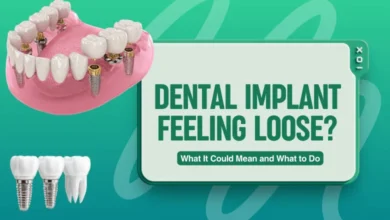Smart Mirrors in Healthcare: Medical Applications and Patient Monitoring

Healthcare facilities increasingly adopt smart mirror technology to improve patient care and streamline medical workflows. These interactive devices combine traditional reflective surfaces with advanced sensors and displays, enabling continuous health monitoring and real-time medical data visualization in hospitals, clinics, and home care settings.
Clinical Applications of Smart Mirrors in Healthcare Settings
Medical institutions implement smart mirrors across various departments to enhance diagnostic capabilities and patient engagement. These devices serve multiple functions beyond basic reflection, becoming integral tools in patient assessment and treatment delivery.
In rehabilitation centers, smart mirrors guide patients through physical therapy exercises with real-time feedback. The mirrors track body movements using depth sensors and computer vision, comparing patient performance against prescribed exercise patterns. When a smart mirror company develops these specialized medical devices, they incorporate clinical protocols to ensure accuracy in movement detection and therapeutic guidance. Physical therapists report 40% improvement in patient compliance when exercises are monitored through interactive mirror systems.
Hospital rooms equipped with smart mirrors enable non-invasive vital sign monitoring. Embedded sensors detect heart rate through subtle skin color changes, measure respiratory rate via chest movement analysis, and estimate blood pressure using photoplethysmography techniques. This continuous monitoring occurs without attached devices, reducing patient discomfort and allowing greater mobility. The mirrors display this information in easy-to-understand formats, helping patients stay informed about their health status while alerting medical staff to concerning changes.
Patient Monitoring Capabilities Through Smart Mirror Technology
Smart mirrors excel at collecting health data through various sensing methods that require minimal patient interaction. This passive monitoring approach improves compliance and provides healthcare providers with comprehensive longitudinal data.
Facial analysis algorithms detect early signs of stroke, Bell’s palsy, and other neurological conditions through asymmetry detection and movement pattern analysis. The technology identifies subtle changes in facial expressions that might indicate pain levels or emotional distress. Dermatological assessments track skin conditions, monitor wound healing, and detect potential melanomas through high-resolution imaging and AI-powered analysis.
Advanced monitoring features include:
- Temperature screening. Infrared sensors measure body temperature without contact, useful for infection control protocols.
- Medication adherence tracking. Cameras verify patients take prescribed medications at scheduled times.
- Fall detection. Motion sensors identify sudden movements indicating potential falls, triggering immediate alerts.
- Sleep quality assessment. Breathing patterns and movement during rest periods indicate sleep disturbances.
The data collected feeds into electronic health records automatically, eliminating manual documentation errors and saving nursing time. Healthcare providers access historical trends and receive alerts about significant changes, enabling proactive intervention before conditions deteriorate.
Integration of Smart Mirrors in Healthcare with Hospital Systems
Successful deployment requires seamless integration with existing healthcare infrastructure. Smart mirrors must communicate with various hospital systems while maintaining strict security and privacy standards.
Electronic Health Record (EHR) integration allows smart mirrors to display relevant patient information while capturing new data directly into medical records. Nurses and doctors access patient histories, test results, and treatment plans through the mirror interface during bedside consultations. This immediate access to information improves care coordination and reduces time spent accessing multiple systems.
Interoperability challenges require careful planning:
- HL7 FHIR compliance. Ensures data exchange follows healthcare industry standards for system compatibility.
- Medical device regulations. Meets FDA requirements for software as medical device (SaMD) classification.
- Network security. Implements encryption and access controls protecting patient information.
- Backup systems. Maintains functionality during network outages or system maintenance periods.
Privacy and Regulatory Considerations for Medical Smart Mirrors
Healthcare smart mirrors must comply with strict regulations protecting patient privacy and ensuring medical device safety. These requirements influence design decisions and operational procedures.
HIPAA compliance demands comprehensive security measures. All patient data collected, transmitted, and stored must undergo encryption. Access logs track who views patient information and when. Cameras and microphones include physical indicators showing when recording occurs, with options for patients to disable monitoring temporarily. Regular security audits verify compliance and identify potential vulnerabilities.
Medical device certification varies by intended use and risk classification. Smart mirrors used for diagnosis or treatment recommendations require more extensive validation than those providing general wellness monitoring. Clinical trials may be necessary to demonstrate safety and efficacy for specific medical claims. Manufacturers must establish quality management systems documenting design controls, risk analysis, and post-market surveillance procedures.
Cost-Effectiveness Analysis of Smart Mirrors in Healthcare Facilities
Healthcare administrators evaluate smart mirror investments based on clinical outcomes, operational efficiency, and financial returns. Understanding these factors helps justify capital expenditures in budget-conscious healthcare environments.
Operational benefits offset investment costs through:
- Reduced readmission rates. Early detection of complications prevents costly hospital returns.
- Decreased nursing workload. Automated monitoring reduces manual vital sign collection time by 30%.
- Improved patient satisfaction. Interactive features and health education increase HCAHPS scores.
- Lower infection rates. Contactless monitoring reduces pathogen transmission opportunities.
Long-term savings emerge from preventive care improvements. Early detection of chronic disease progression allows timely interventions preventing expensive emergency treatments. Remote monitoring capabilities enable earlier hospital discharge while maintaining care quality, reducing per-patient costs significantly.
Future Developments in Healthcare Smart Mirror Applications
Emerging technologies promise expanded capabilities for medical smart mirrors. Artificial intelligence advances enable more sophisticated diagnostic capabilities and predictive analytics.
Machine learning models trained on large patient datasets will identify disease patterns invisible to human observation. Genetic risk factors combined with daily monitoring data could predict health events weeks before symptoms appear. Natural language processing will enable mirrors to conduct basic health assessments through conversational interfaces, triaging patients and providing health education.
Integration with wearable devices and home IoT systems creates comprehensive health monitoring ecosystems. Smart mirrors serve as central dashboards displaying data from multiple sources while coordinating care across settings.
Conclusion
Smart mirrors in healthcare represent a practical evolution in patient monitoring and medical service delivery. These devices address real challenges in healthcare including staff shortages, rising costs, and patient engagement. Successful implementation requires careful attention to clinical validation, regulatory compliance, and system integration. As technology advances and costs decrease, smart mirrors will become standard equipment in healthcare facilities, improving patient outcomes while reducing operational burdens on medical staff. Healthcare organizations should evaluate their specific needs and regulatory requirements when considering smart mirror adoption.







